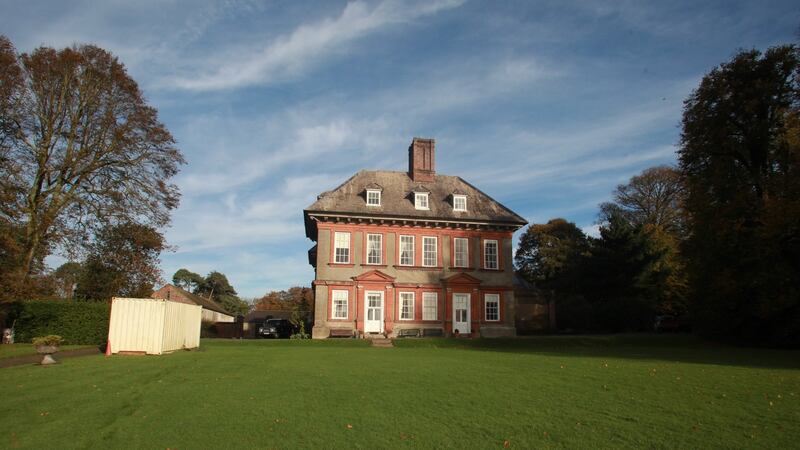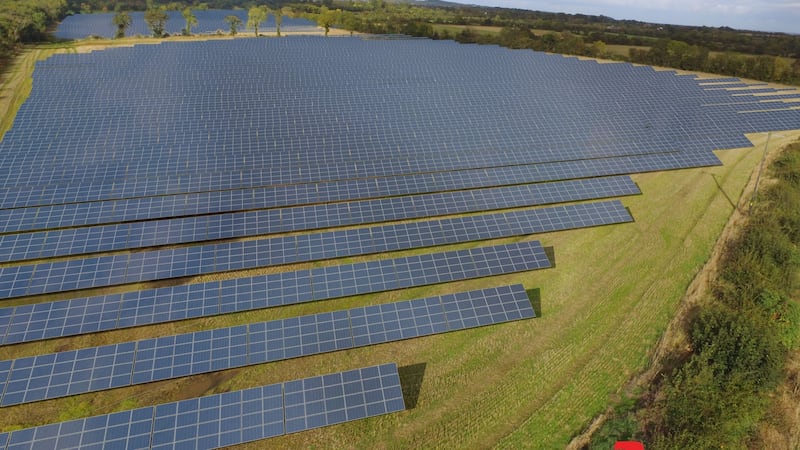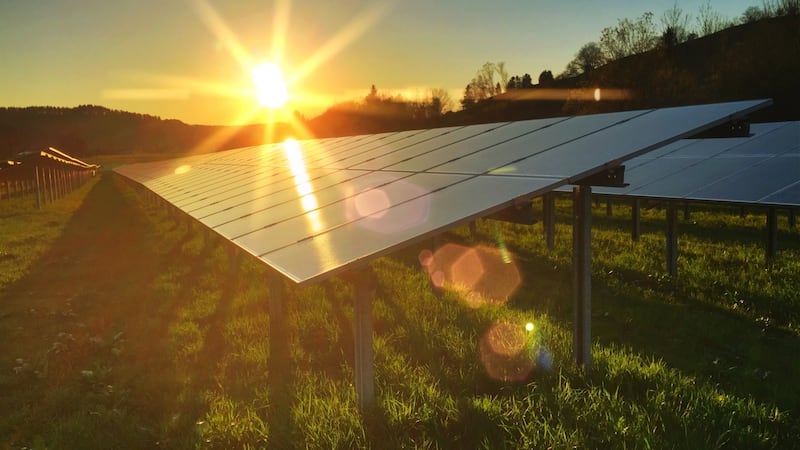Many of Ireland's country estate houses have been repurposed as wedding venues, but at the 17th-century Beaulieu House in Co Louth there's a different kind of marriage under way. It's a union between a centuries-old country estate and modern green technology. Beaulieu House (pronounced Bewley) is soon to be home to a large solar energy farm.
Owner Cara Konig-Brock is custodian not only of her family’s heritage going back 11 generations, but also of a property that is part of Irish architectural history.
Beaulieu is one of the first country houses built in Ireland without fortification – a significant turning point in the development of Irish architecture. It was the creation of Sir Henry Tichborne, who was granted a patent to the lands in 1666 by Charles II.
Situated in Co Louth on the north bank of the river Boyne between Drogheda and the Irish Sea, the estate was originally owned by the St Oliver branch of the Plunkett family before it was acquired by Sir Henry, who was marshal of the army in Ireland and governor-general of Drogheda at the time of the Restoration of Charles II.
Dutch style
It was turned into the house it is today in the mid-17th and early 18th century and has remained largely unchanged since. Its Dutch style is unique in Ireland. Its four-acre walled garden – one of the earliest walled gardens in Ireland – is believed to have been designed by Dutch artist Willem van der Hagen, who settled in Ireland in the 1720s.
On this historic site, the installation of 20,000 solar panels may seem incongruous. The five-megawatt, fixed-array solar farm spread across 23 acres can generate enough electricity to power 1,500 homes for a year.
But the farm’s green credentials, sympathetic location, and a critical need to secure the future of the house and gardens convinced Konig-Brock that “the combining of modern technology with a very traditional place, almost in a time warp” was a once-in-a-lifetime opportunity .

The solar farm, a partnership with Power Capital, is smaller than some of the solar farms that are expected to become part of the Irish landscape, but it will be one of the first to get up and running.
Maintenance of the property is becoming a financial strain. “The older it gets the more fragile it becomes,” Konig-Brock explains.
The most accessible part of the property – the house and walled garden – won't change at all
Income from the solar farm will go back into the house. It will enable a range of enhancements and help keep the property open for local and international visitors. Beaulieu House is open to the public for three months every summer, and plays a cultural role as host to two annual festivals: the Vantastival campervan festival and the Drogheda Arts Festival.
‘Carbon neutral’
Diversification of a portion of Beaulieu’s 400 acres to solar photovoltaic power generation, Konig-Brock believes, will not only ensure the long-term viability of the estate but fits with her wish – as a gardener more than a farmer – that it becomes “carbon neutral” and assists in the fight against climate change.
The project comes with reassurance: it's "low impact" and reversible after 25 years. The remote location of the solar farm, and existing topography and hedgerows, mean house and garden are well screened. "The most accessible part of the property – the house and walled garden – won't change at all," says Konig-Brock, who is also chairperson of Boyne Valley Garden Trail and board member of the Irish Historic Houses Association.
Justin Brown, director of Power Capital, acknowledges the sensitivities required around deploying new technology in such a historic area and in ensuring that the marriage is for the right reasons: principally that the solar-energy infrastructure blends with the landscape and its surroundings rather than being imposed on it.
Specialising in solar photovoltaic energy, Power Capital was established in 2011 as an Irish development and investment company for the renewables sector. Up to now it has been overseeing projects in Germany and Italy.
“Solar is coming to Ireland,” Brown predicts. Hundreds of solar farms will be “the appetiser”. Solar photovoltaic will soon outstrip wind turbines globally in costs and efficiency. This development is due to power storage enhancements, including new-generation lithium batteries, and an ability to consistently match output with demand.
Brown, conscious of Ireland's reputation as a laggard in curbing the carbon emissions that cause global warming, is keen that we quickly follow other countries such as Denmark. Ease of adoption, no emissions, no moving parts and no noise are the key advantages of solar. "I would like to think there will be a push in Government to catch up, backed by a clear policy on solar energy."
Diversity
Brown accepts Ireland is well suited to wind-power generation. Wind currently provides three gigawatts to the national network. But there are days when the wind doesn’t blow, and a diversity of energy sources is required.
Onshore wind is the cheapest renewable in Ireland, but solar photovoltaic is catching up and is expected to cost less than wind by 2025, he adds. His company is now meeting farmers and land owners to identify suitable locations. Beaulieu stood out. “We went looking for a partner. It was very fortunate we came across Cara,” he says.
The Beaulieu site entails a capital investment of about €5.5 million, which comes from Power Capital's investment partners, mostly overseas investors. The planning application was submitted earlier this month – Louth County Council has a policy to encourage renewable energy generation including solar. It has applied to the ESB for access to the national grid. Construction is expected to take just 12 to 16 weeks; all going well, the farm could be in place by early 2018.
Asked if she is worried about the local response to the development, Konig-Brock says the solar farm’s location means people won’t see it. But she is anxious to explain to her neighbours how it fits in with her masterplan to ensure Beaulieu survives, and to underline how it respects the estate’s natural beauty and ecology, which “marries very well with clean energy”.

Already, she is involved in engaging the nearby community and is keen for people to view on location what’s envisaged.
It has been a lucky turn of events for Beaulieu, she believes. “I had the right field in the right place, with the right number of hours of sunshine.”
It’s a good fit for lots of practical reasons, she says, that all add up to benefiting Beaulieu House and its surroundings not just for her family but for those who visit it.
But she is especially reassured, as a committed “green”, that this marks a clear path to sustainability.
Sun burst: Ireland’s solar-powered future
Solar energy is growing around the world, and in Ireland. Some 200 large solar farms have received planning permission and secured access to the national electricity grid – an investment exceeding €1 billion, according to the Irish Solar Energy Association (ISEA). Many more are in the immediate planning pipeline.
The cost of solar photovoltaic panels – devices to capture the sun’s energy – has declined dramatically in recent years, and while Ireland doesn’t match the Mediterranean in terms of pure sunshine, it does get 70 per cent of what Madrid gets, explains Justin Brown of Power Capital. Power generation is possible on a cloudy day, though at a reduced level.
The case for solar is clearer than ever: it is now the most invested-in technology across the world and the cheapest to deploy after onshore wind in Ireland
This potential for a viable sustainable energy sector is enough to attract substantial backing from international capital investors.
Ireland is committed to producing 40 per cent of electricity generation from renewables by 2020. Progress so far has been mainly in onshore wind energy, but “wind is challenging for planning and [electricity] network balancing” in maintaining supply, the ISEA points out.
Falling short
Ireland is currently falling short of its target. The proposed solar development at Beaulieu House, and others of its kind, can help bridge the gap, Brown adds. “Solar is ideally situated to assist in the transition to renewable sources of power, due to its quick and easy deployment.”
Failure to meet EU carbon reduction targets, especially in adopting renewables, will lead to significant fines for Ireland from 2020 onwards, which is concentrating minds in Government. The ISEA estimates these fines will amount to more than €300 million a year.

“The case for solar is clearer than ever: it is now the most invested-in technology across the world and the cheapest to deploy after onshore wind in Ireland. It can also be constructed and installed a lot quicker than any other form of renewable technology,” says ISEA chief executive Michael McCarthy.
Multinational companies in Ireland, such as Microsoft, have signalled they want all their energy to come from renewable sources sooner rather than later (because of climate change and corporate social responsibility commitments). Solar can guarantee "security of supply", says McCarthy.
Budget 2018 saw the introduction of tax relief for farmers who lease land for solar infrastructure. The Government's Renewable Energy Support Scheme – now at consultation phase – will define who and what will qualify for critical subsidies that will fund development of renewable energy in Ireland for the foreseeable future.
Boom-and-bust
The scheme claims to be “technology-agnostic”, but getting the mix wrong risks favouring one energy source over another. This happened in the UK, where onshore wind was favoured, and solar ended up in a boom-and-bust scenario. Ireland has “late-mover advantage” in avoiding those pitfalls, says Brown.
There are some essentials still required, notably a clear market signal for investment, budgetary supports, a new sense of urgency on 2020 targets and rigorous timelines, the ISEA believes.
While local authorities have guidelines on solar energy, a lack of national planning guidelines – and a reliance on local authority guidelines which can vary from county to county – is a key factor in the current backlog of solar projects, says Michael Phillips of Dulas, a UK renewable energy developer and consultancy.
Minister for Climate Action and Environment Denis Naughten is also considering how best to support "micro-generation". This encompasses generators deployed within homes, businesses and other commercial properties, where there is some level of self-consumption of electricity generated. It includes technologies such as small-scale solar, wind turbines, hydro and combined heat and power.
Environmental groups such as Friends of the Earth contend that microgeneration – such as rooftop solar PVs – offers all citizens the opportunity to benefit from the energy revolution.











